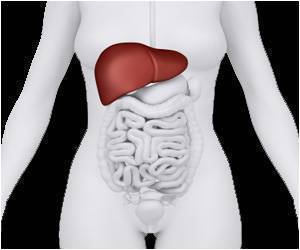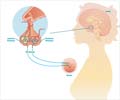- Prolactin is a peptide hormone that helps in lactation in women, as well as performing many other functions
- Prolactin levels that are within the normal range, but on the higher side, can protect against the risk of developing type-2 diabetes mellitus (T2DM) in women
- This study could lead to the development of novel strategies for the early treatment and prevention of T2DM
Read More..
What is Prolactin?
Prolactin is a peptide hormone secreted by the anterior lobe of the pituitary gland, located in the brain. Prolactin was originally named after its role in milk production (lactation) in suckling mothers. It has since been found that prolactin has over 300 functions in the body. These functions can be broadly divided into five types:- Reproductive
- Metabolic
- Osmoregulation (regulation of body fluids)
- Immunoregulation (regulation of the immune system)
- Behavioral functions
What is Type-2 Diabetes Mellitus (T2DM)?
T2DM is the most common form of diabetes and occurs due to insulin resistance, where the body does not use insulin properly to maintain the level of blood glucose within normal limits. This results in elevated blood glucose levels, which is technically termed as hyperglycemia. In T2DM, the pancreas makes extra insulin to overcome the insulin resistance. But, over time it is not able to keep up and make enough insulin to keep the blood glucose within normal levels. T2DM is usually treated with oral anti-hyperglycemic medications and insulin injections.Study Details
This was a large prospective study that involved 22 years of follow-up. Data on blood levels of circulating total prolactin and risk of T2DM were analyzed. This involved two large-scale studies in women, which included the Nurses’ Health Study (NHS) and the associated NHS-II.Total prolactin levels were measured at baseline in both groups (NHS: 1989-1990; NHS-II: 1996-1999). These included 8,615 women who did not suffer from T2DM, cardiovascular disease or cancer. Blood was collected from a subset of 998 women in the NHS group for a second time during 2000-2002.
Study Findings
During the follow-up period, 699 women developed T2DM. It was found that total prolactin levels were inversely correlated with the risk of occurrence of T2DM i.e. higher the levels of prolactin, lower the risk of developing T2DM. The study showed that women in the group with the highest 25% levels of prolactin were 27% less likely to develop T2DM than those in the bottom 25% levels of prolactin.This correlation was not influenced by the menopausal status of women or other risk factors. Importantly, the results did not change even after adjustments were made for sex, growth hormone levels, adiponectin levels as well as inflammatory and insulin biomarkers. This inverse relationship between total prolactin levels and T2DM risk remained significant for approximately the first decade post-bleeding, but gradually waned thereafter.
The authors are of the opinion that the decreased association between the two parameters could be due to natural fluctuations in the prolactin levels in the blood. Alternately, prolactin levels could be reduced by impaired glucose tolerance.
Author’s Viewpoint
The authors indicated that since the study was conducted on white middle-aged women, the results were not translatable to men or to women of different age groups or other ethnic backgrounds.The authors say: “In a large prospective cohort study of US women, total circulating prolactin concentrations within the physiological range were inversely associated with T2DM risk, especially during the first 9-10 years of follow-up after blood samples were taken.”
They added: “Our epidemiological observations, coupled with previous population data and emerging experimental evidence, support a potential protective role of prolactin (within the biologically normal range) in the development of T2DM risk in women. Future studies are warranted to understand the biological mechanisms underlying this association, which may lead to the development of new strategies for early prevention and treatment of T2DM.”
References:
- Circulating prolactin concentrations and risk of type 2 diabetes in US women - (http://diabetologia-journal.org/wp-content/uploads/2018/09/Li.pdf)
Source-Medindia















